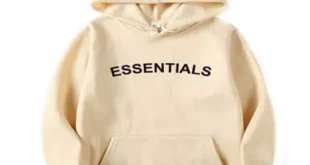In today’s competitive business landscape, presenting your brand or product at exhibitions, trade shows, or conferences is a powerful marketing tool. However, to make a lasting impression and attract potential clients or partners, you need more than just a booth and a product demo—you need well-designed, engaging exhibiting graphics. These graphics serve as your visual language, conveying your brand message quickly and effectively.
In this article, we’ll explore the importance of exhibiting graphics, the elements that make them successful, and how to use them to enhance your exhibition experience.
1. What are Exhibiting Graphics?
Exhibiting graphics are the visual materials used in trade shows, exhibitions, conferences, or any event where a brand or company seeks to showcase their products or services. These graphics can include a wide range of items such as banners, posters, digital displays, printed materials, and even 3D structures designed to attract attention and communicate key information.
The primary goal of exhibiting graphics is to engage visitors, create a memorable brand experience, and communicate your business offerings in a clear and impactful way. Whether digital or printed, the design and placement of these graphics play a significant role in driving foot traffic and encouraging interaction with your display.
2. Why Are Exhibiting Graphics Important?
Exhibiting graphics are not just about aesthetics—they are strategic tools that directly contribute to the success of your exhibition efforts. Here’s why they are important:
1. Attract Attention
In crowded exhibition spaces, attracting attention is the first challenge. Well-designed graphics can capture the eye of visitors, making your booth stand out among competitors. Bold, vibrant colors, clear text, and captivating imagery can help ensure that attendees are drawn to your space.
2. Create a Memorable Brand Presence
Your exhibition graphics are a reflection of your brand’s identity. Consistent use of your company logo, brand colors, and typography reinforces brand recognition. Well-executed graphics make your booth memorable and leave a lasting impression on visitors.
3. Communicate Your Message
Graphics serve as a powerful communication tool. A good design can deliver your message instantly, whether it’s the introduction of a new product, an event promotion, or your company’s mission. By using visuals such as infographics, diagrams, or videos, you can present complex ideas in a simplified and engaging way.
4. Increase Engagement
Interactive and visually appealing graphics encourage more visitors to engage with your booth. This could mean stopping to read a banner, watching a video, or interacting with a digital display. The more interaction you get, the greater your opportunity for conversion.
3. Key Elements of Effective Exhibiting Graphics
To create graphics that truly stand out and serve their purpose, several elements need to come together. Here are the most important factors to consider when designing exhibiting graphics:
1. Simplicity and Clarity
Less is often more when it comes to graphic design. In an exhibition environment, you have limited time and space to convey your message. Keep your graphics simple and easy to understand at a glance. Use short, concise headlines and bullet points, and avoid cluttering your display with too much text.
2. Brand Consistency
Your exhibition graphics should align with your overall branding. Use your company’s color palette, logo, and font styles to create a cohesive look across all materials. Consistent branding across all your marketing touchpoints builds trust and ensures recognition.
3. Eye-catching Design
Make your graphics visually striking. Use bold colors, high-quality images, and well-chosen typography. Large, readable fonts and high-resolution images will ensure your graphics are legible from a distance, especially in busy exhibition halls.
4. Call to Action (CTA)
Your exhibiting graphics should not only inform but also inspire action. A clear call to action (CTA), such as “Visit us for a demo” or “Sign up for a free trial,” encourages visitors to take the next step. The CTA should be prominent and easy to understand.
5. Functionality
Consider the placement and format of your graphics. Banners, posters, and digital displays should be strategically positioned to draw attention from various angles. Consider the flow of traffic and ensure that your graphics don’t obstruct movement around your booth. Digital displays and touchscreens can be used for interactive content, giving visitors an opportunity to explore your brand further.
6. Use of Technology
Incorporating technology into your exhibiting graphics can provide a more dynamic and interactive experience. Video displays, digital signage, and augmented reality (AR) elements can engage attendees more deeply, making them more likely to remember your booth.
4. Types of Exhibiting Graphics
There are various types of exhibiting graphics, and the choice of which to use depends on the nature of the event and your goals. Below are some of the most common types:
1. Pop-up Banners
Pop-up banners are a quick and easy way to add visual interest to your exhibition space. They are portable, lightweight, and easy to set up. These banners typically feature key messages, branding, and eye-catching visuals.
2. Backdrops and Wall Graphics
Large fabric or vinyl backdrops can create an immersive brand environment. Wall graphics are often used to create a sense of space or enhance the branding of a booth. These are great for larger booths or areas where you want to make a bold visual statement.
3. Digital Displays and Screens
Interactive digital screens can display videos, slideshows, or product demonstrations. Digital displays capture attention and can convey information dynamically. Touchscreen displays allow attendees to interact with your content, improving engagement.
4. Floor Graphics
Don’t overlook the space beneath your feet! Floor graphics can guide attendees to your booth or highlight special promotions. Creative floor designs can also make your booth more memorable.
5. Brochures, Flyers, and Handouts
While not strictly graphic design for large displays, printed materials like brochures, flyers, and business cards are essential for continuing the conversation with booth visitors after the event. These materials should complement your larger graphics with consistent branding and messaging.
5. Best Practices for Designing Exhibiting Graphics
To maximize the impact of your graphics, consider these best practices:
- Know Your Audience: Understand the audience at the exhibition or trade show and tailor your graphics to their interests. Are you targeting professionals, consumers, or a mix of both?
- Use High-Quality Images: Avoid pixelated or low-resolution images. High-quality visuals reinforce professionalism and credibility.
- Test Your Design: Before committing to production, test your designs in a mock-up or get feedback from colleagues or designers. Ensure your graphics are legible and engaging from various distances.
- Be Creative, but Clear: Creativity is important, but the goal of exhibiting graphics is to communicate clearly. Don’t sacrifice legibility for artistic expression.
6. Conclusion
Exhibiting graphics are a vital component of any successful exhibition. They help businesses capture attention, communicate their message effectively, and engage with potential clients. From the design process to implementation, thoughtful and well-executed graphics can elevate your exhibition presence and drive meaningful interactions with attendees.
 The Random Collective Where Curiosity Meets Creativity
The Random Collective Where Curiosity Meets Creativity





